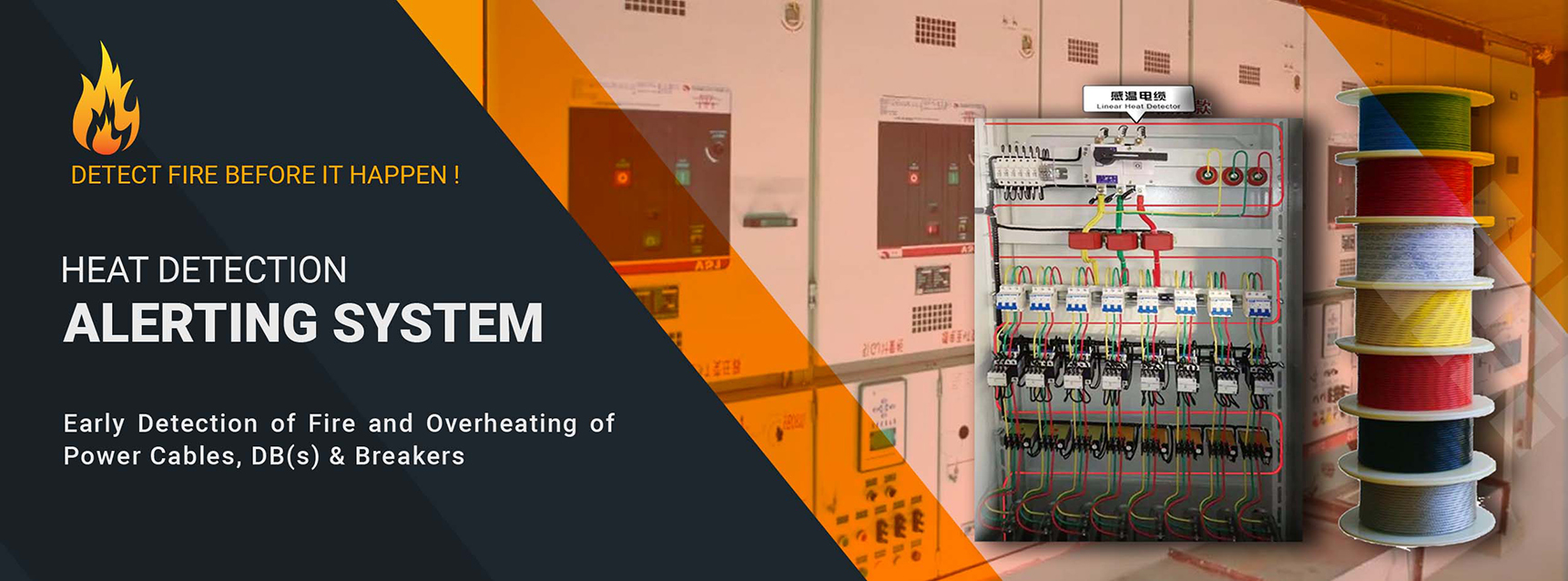Detection Cable
Analogue & Digitial HDS Cable
Multiple Temperature Ranges 68ºC, 88ºC, 105ºC, 138ºC, 180ºC

Heat Detection System (HDS) is designed to provide early detection of fire and overheating. HDS will detect fire and overheating in circumstances where other forms of detection would not be viable, either due to inability to sustain the environment requirements or through prohibitive costs. This allows you to respond to threats of fire rapidly. LHDC may be installed with the ability to trigger alarms for hot spots occurring on very small sections of the overall cable and, providing the LHDC has not been subjected to excessive temperatures.
Analogue HDS is designed to provide early detection of fire and overheating in circumstances where other forms of detection would not be viable, either due to inability to sustain the environmental requirements or through prohibitive costs.
Analogue HDS is a coaxial cable constructed with a copper coated steel central conductor, an inner insulation (dielectric), a tinned copper braid layer and an overall protective sheath. Additional over sheaths are available for mechanical protection with Stainless Steel armour and nylon to provide resistance to Chemicals and Ultra Violet radiation. The primary mechanism of heat (fire) detection is that the resistance of the dielectric is monitored between the central conductor and braid layer, which has a negative temperature coefficient (NTC). Analogue Heat Detection Cable is employed in conjunction with an end of line terminating device for continuity monitoring and a zone monitoring controller providing adjustable alarm thresholds and Fire and Fault outputs.
The Digital HDS comprises of a twisted pair, two core cable. Digital LHDC operates at fixed temperatures and is non-resettable.
The Digital LHDC operates by reacting to heat (fire). The insulators between the two conductors plasticise at the design temperature, creating a switch circuit at the point of operation. The Linear Heat Detection Cable is employed in conjunction with an end of line terminating device for continuity monitoring and a zone monitoring controller to provide outputs for Fire and Fault. An LHDC controller with Distance Location (up to 2000m) to the point of operation is also available. As the Digital LHDC provides a simple switched output on operation, the LHDC can be monitored by a conventional or Analogue Addressable zone monitor.
Analogue & Digitial HDS Cable
Multiple Temperature Ranges 68ºC, 88ºC, 105ºC, 138ºC, 180ºC
Heat Detection Controller
Multiple monitoring functions could be connected to various alarming control panel mainframes.
Line Terminator
FFor balancing the signal status cable monitoring and alarm/fault simulating.
Easy to install due to its flexibility and versatility for many environments.
Extensive single zonal lengths of the specially designed cable can trigger alarms for hot spots occurring on very small sections of the total cable.
Designed to provide early detection of fire when detecting overheating where other forms of detection are incapable.